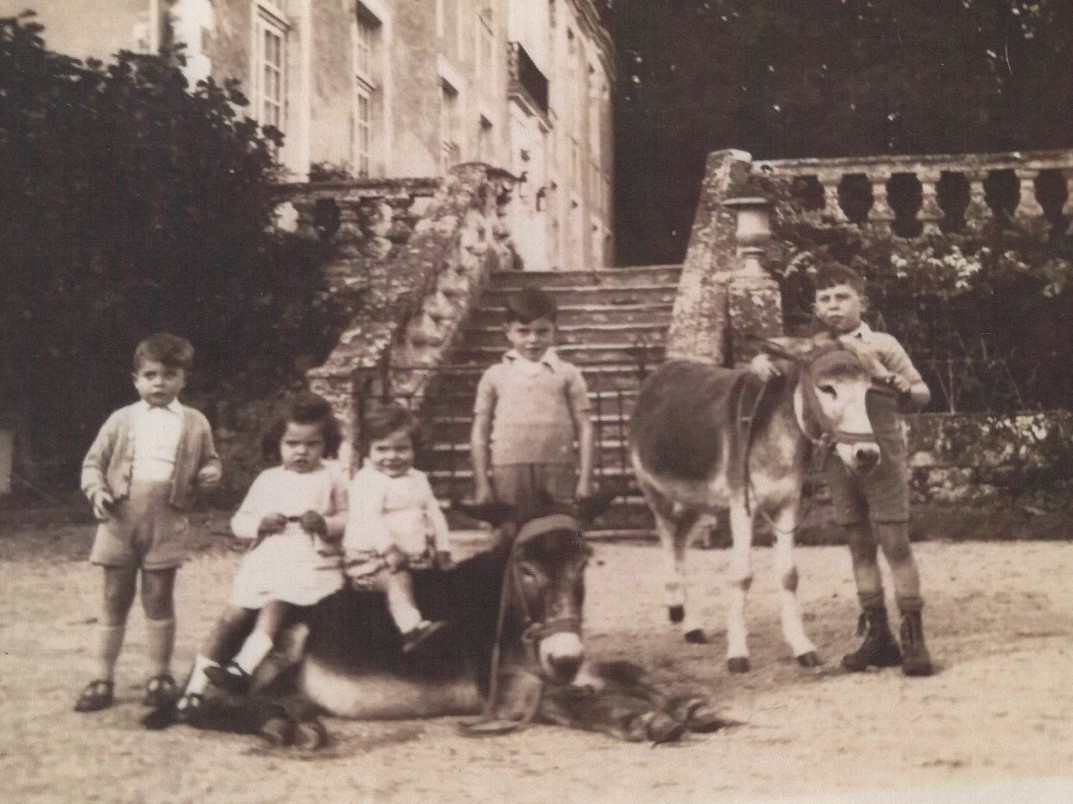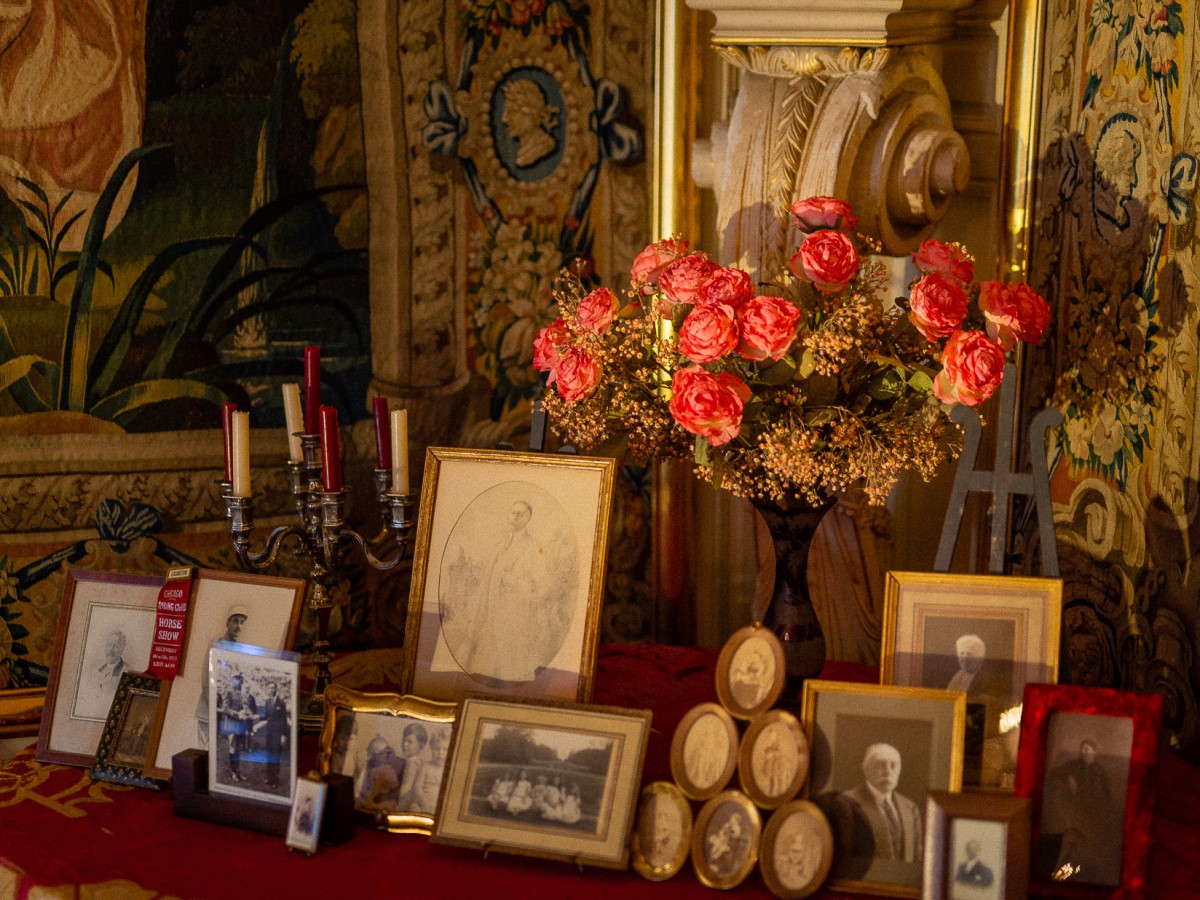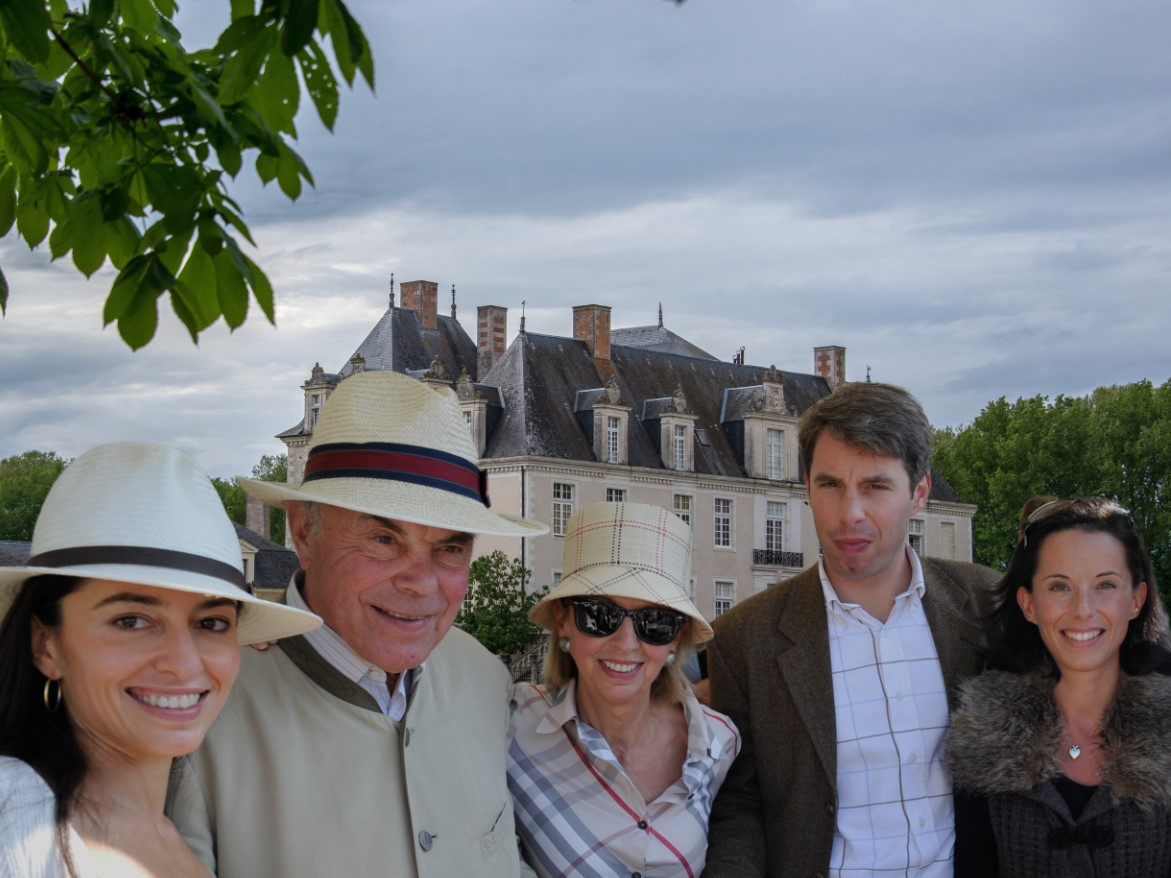Champchevrier: from the campus caprarius to the castle today
In the 11th century a fortress belonging to Hugues de Champchevrier stood in place of the current castle. Its name comes from the Latin, “campus caprarius”, the field of the goatherd which already evokes the presence of many deer on the domain. This castle was in 1253 owned by the Maillé family. It passed by marriage to different families: the Laval, the Bastarnay, and then the Daillon in 1550.
On the ruins of the fortress, the Daillons rebuilt a Renaissance castle, whose mullion windows you can still see. The east facade was modified in the XVIIIth century. The archives of baptisms and weddings celebrated here mention the chapel from as early as 1540. The magnificent gate closing off the court of honour replaced a drawbridge destroyed in 1792. The impressively large dovecote, dating back to the XVIth century, reflects the size of the estate.
Henri de Daillon had no son so his nephew, Antoine, Duke de Roquelaure, a Marshal of France, inherited the castle in 1686. He built courtyards, gardens and moats all around the castle. Antoine de Roquelaure had no son either and as his wife preferred the court of Versailles to Champchevrier, he sold the castle in 1728 to Jean-Baptiste Pierre Henri de la Rüe du Can. The new owner was made Baron of Champchevrier by Louis XV in 1741 by letters patent which made the Champchevrier estate into a barony. The present owners are his direct descendants and so the same family has owned the castle for nearly three centuries.
The first baron built the terrace on the East side (first half of the XVIIIth century). He was very committed to improving the estate and created the fine views from all sides of the castle towards the surrounding forest.
Royal: Louis XIII loved it!
It is a tradition that a castle like Champchevrier can accommodate distinguished guests, foremost among them the king, who has his apartment here. The Royal Chamber is one of them. It was King Louis XIII who graced the residence with several stays. In fact, the owner at the time, François de Daillon, was also the governor of the king’s brother, Gaston de France, Duke of Orleans. Louis XIII stopped at Champchevrier on his way to visit his brother.
Between June and August 1619, Louis XIII came to Champchevrier on several occasions and stayed there with much pleasure. We know exactly what he did while visiting thanks to the diary kept by his personal doctor, Jean Héroard.
“Arrives at half past six at Champchevrier. Goes to the pond. Come back at half past eight. At nine, he has dinner. Shortly afterwards, unable to sleep on the satin mattress in his Royal Chamber, he sends for some fresh straw. Wearing a shirt, he falls asleep on the straw and wakes up at three-quarter after three. Goes up, dresses, had a snack ... Take his arquebus and goes to the farmyard to have some fun shooting pigeons (...) "
The good pleasure of a young king then only 18 years old!
On the ruins of the fortress, the Daillons rebuilt a Renaissance castle, whose mullion windows you can still see. The east facade was modified in the XVIIIth century. The archives of baptisms and weddings celebrated here mention the chapel from as early as 1540. The magnificent gate closing off the court of honour replaced a drawbridge destroyed in 1792. The impressively large dovecote, dating back to the XVIth century, reflects the size of the estate.
Henri de Daillon had no son so his nephew, Antoine, Duke de Roquelaure, a Marshal of France, inherited the castle in 1686. He built courtyards, gardens and moats all around the castle. Antoine de Roquelaure had no son either and as his wife preferred the court of Versailles to Champchevrier, he sold the castle in 1728 to Jean-Baptiste Pierre Henri de la Rüe du Can. The new owner was made Baron of Champchevrier by Louis XV in 1741 by letters patent which made the Champchevrier estate into a barony. The present owners are his direct descendants and so the same family has owned the castle for nearly three centuries.
The first baron built the terrace on the East side (first half of the XVIIIth century). He was very committed to improving the estate and created the fine views from all sides of the castle towards the surrounding forest.
Family owned
The same family still owns the castle after almost three centuries. Neither the Revolution nor the wars broke the continuity of this link between a house and a family.
The Revolution
During the Revolution the family did not leave the castle. Records tell us that the drawbridge (in place of the current gate of honor) is destroyed, and the coats of arms are broken but that no irreparable damage is done. The second Baron de Champchevrier was imprisoned several times but that he obtains the right to sleep in a four-poster bed in his cell. However, during his last incarceration, it was very close that he had to embark on a last voyage towards Place de Grève and La Guillotine. He was saved by the death of Robespierre which put an end to the Terror.
The World Wars
During the 1st World War, the owners decided to finance a secondary convalescent hospital out of their personal funds. The castle was rearranged to be able to house the many beds of the wounded soldiers. The Baroness and her four daughters began to replace the wound dressings and take care of the recovering soldiers to the best of their ability. You can still find some of the medicine used in the old medicine cabinet of the castle.
In June 1940, the British Embassy, fleeing Paris from the advancing Germans, settled for a few weeks in Champchevrier before they had to leave again for Bordeaux to join Great Britain by boat.
In 1945 the Château de Champchevrier was classified a Historic Monument.



Opening to the public
A first step towards modernity was taken when in 1995 Pierre Bizard, son of Jeanne-Marie Bizard born Mademoiselle de Champchevrier, decided together with his wife to open the castle to the public while continuing to live there. Aware that their heritage must evolve with its time to be able to be maintained they are writing this new chapter in the history of the castle with enthusiasm.
In 2017, the ownership of the castle passed to a new generation, the 13th to live in it, still descending directly from Jean-Baptiste de la Rüe du Can, Baron de Champchevrier. Pierre and Béatrice leave the castle to their children, Laurence, Christophe and Charlotte, who now have the common goal of bringing their heritage into the 21st century, making Victor Hugo's words their own:
"There are two things in a building: its use and its beauty. The use belongs to the owner, its beauty to everyone."
Pierre and Béatrice now have grandchildren: there are thus 3 generations of the same family that the visitors might meet while visiting. Past, present and future live happily together at Champchevrier.
